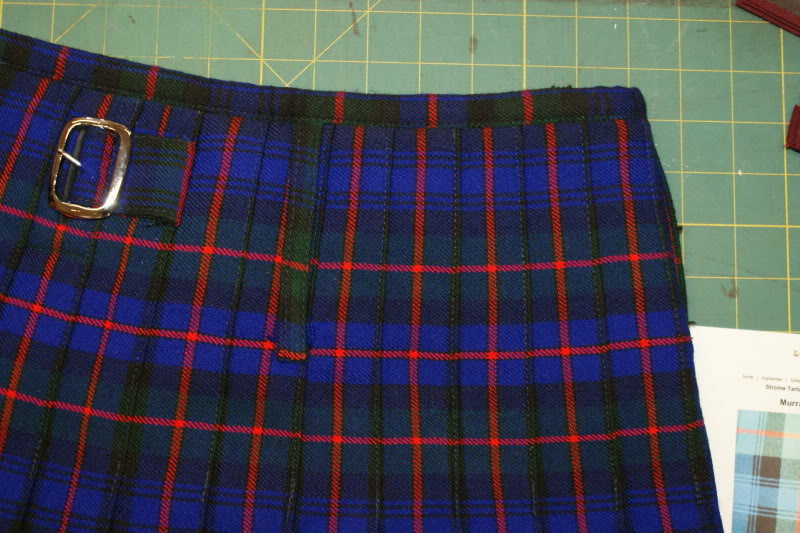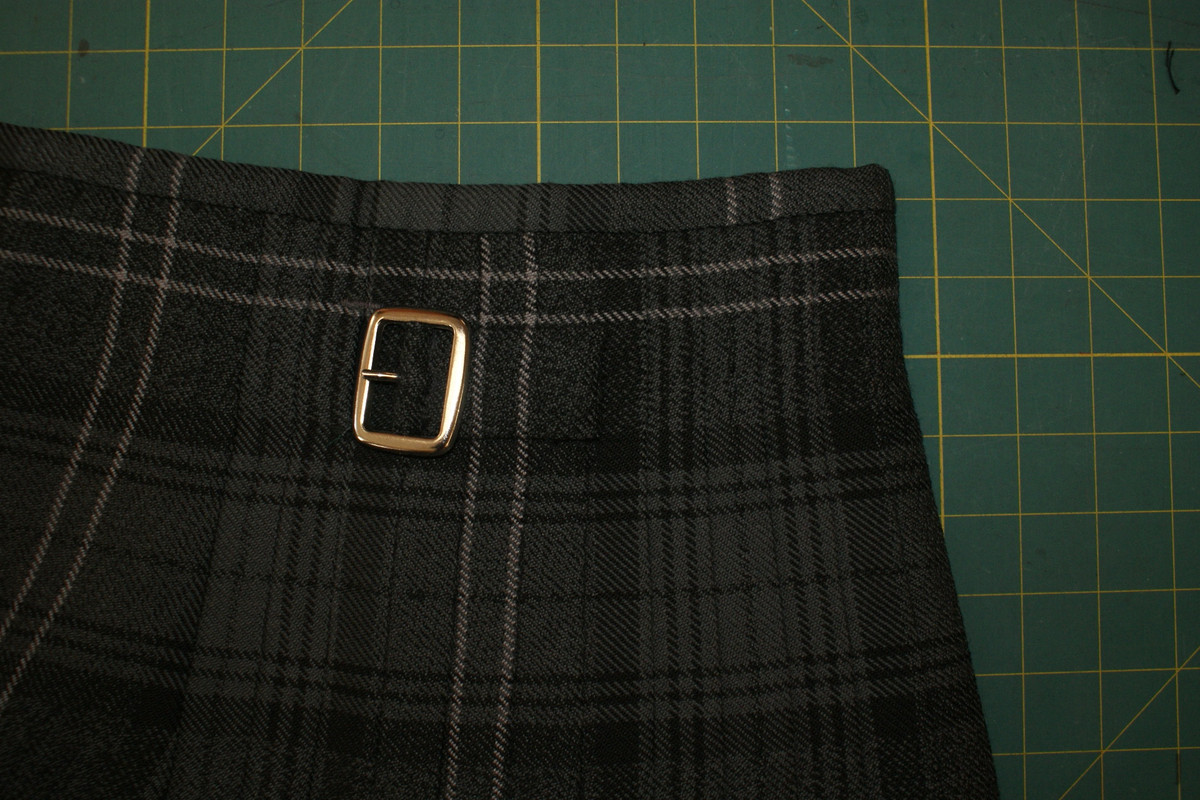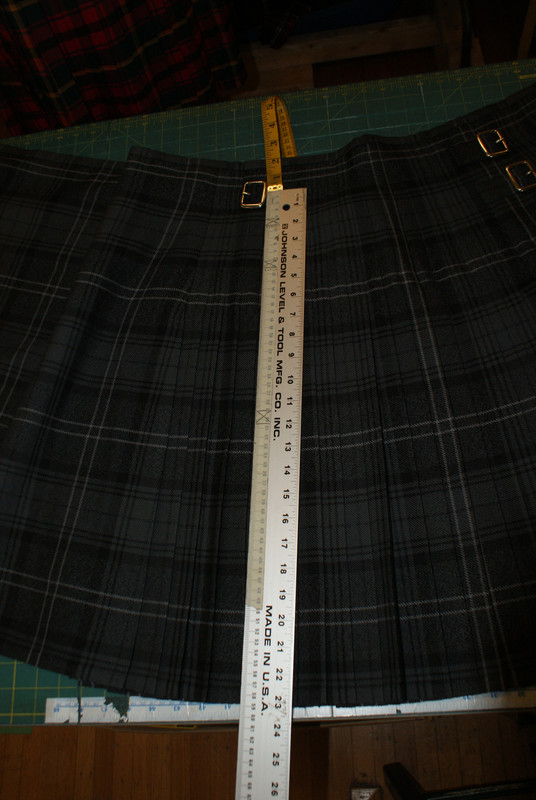|
-
8th November 13, 05:17 PM
#1
Is my kilt the size I think it is?
We hear on X Marks all the time about a guy who orders a kilt and when it arrives it does not fit.
What is wrong?
I thought I would do a tutorial on how to tell if the kilt you got, is the size that you ordered.
Now, before I get too far into this perhaps I should re-enforce the idea that communication is the most important part of ordering a new kilt.
I suggest that you communicate directly with the person who will actually stitch your kilt. Sometimes, if your trying to save a few bucks and ordering from a large company who does not actually make their own kilts, talking to the kiltmaker may not be possible.
But please communicate. Three or four emails back and forth before you place your order will usually save a lot of frustration later on.
The second most important thing is taking good measurements. Did you take your measurements right?
I cannot stress strongly enough that you must take your measurements using the measuring instructions of the person who will make your kilt.
Never, ever, send in a set of measurements to one kiltmaker using the measurements you got from another kiltmaker or off of another kiltmakers site or from a youtube video!
There is one part of the measuring that always seems to bring up the same problems. The location of where the Waist of the kilt, is designed by the maker, to fit.
One of the hallmarks of kilts that are made in the Traditional style is that they are designed to be worn at the anatomical waist. If you order a kilt that is made in the traditional manner, then attempt to wear it at anything other than where it was designed to be worn, it will not fit, look or swish the way it was designed to.
You may wish to wear your kilt lower, but a kilt designed to be worn at the anatomical waist, will not fit or look right if worn where it was not designed to be worn.
We see this all over the web. The hem is down below the top of the knee cap because the kilt is being worn lower that it was designed. This is also the cause of large shower curtain folds in the back pleats or the kilt having splayed, distorted or a distinct "A-line skirt" shape.
So, where is the anatomical waist.
Here is a photo showing how the anatomical waist differs from where we wear pants.
The top band is at the anatomical waist.
For reference, the navel in this photo is in the center of the center band.
(Traditional kiltmakers do not use the navel as a reference because the navel is in soft tissue and changes. The more of a belly you have, the lower the navel will be. If the measuring system of where you wish to purchase your kilt, references the navel, it is a very good chance that they make kilts in something other than the Traditional method. This is not bad, you just need to know this before you order.)
 
If you wish to wear your kilt at something other than the Traditional anatomical waist, that is great. Just make sure you order your kilt from a maker who is familiar the type of kilt you want to wear.
And this confuses the issue because not everyone understands that not all kilts are made the same. I think you can all understand, that if you want your kilt to stay put on your body the kilt should be made with the smallest part of the kilt at the top buckles. That only makes sense, right?
Well, here is a kilt sold by a well known Scottish company. Take a look at where the smallest part of the kilt is. It is at the top of the kilt, not at the level of the top straps.
This kilt will always slide down until the smallest part of the kilt fits into the smallest part of your body.


Here is a kilt with the smallest part of the kilt at the top straps. Can you see the difference?


The lesson here is that you must know what type of kilt the kiltmaker makes. This brings us back to communicating with your kiltmaker.
Now, your kilt has arrived and when you strap it on it does not fit. What now?
Well, three things may have happened. You may have sent the wrong measurements. Or, the kilt is not made to the measurements you sent in. Or the kilt is not made in the style you thought it was.
How do you tell?
First let's look at the length of the kilt.
If your kilt is made in the Traditional way, like the gray kilt above, the "Drop" measurement is taken from the center of the top straps down to the hem.
The part of the kilt above the top straps is called the "Rise". A hint - if the measuring instructions or the description of the kilt do not mention "Rise" the maker may not make kilts in the Traditional style.
In this photo I have put a yardstick with "0" at the center of the top buckle.

You can see the yellow tape measure showing the 2" rise above the buckle.
This kilt has a drop of 23" and a rise of 2" for a total length of 25".

If you sent your kiltmaker the 25" measurement but they assumed from their instructions that you meant Drop you will now have a kilt that is too long.
Remember what I said about communicating with your kiltmaker? It is really a good idea to know what definition of terms the kiltmaker will use when they start sewing.
Last edited by Steve Ashton; 9th July 21 at 04:37 PM.
-
The Following User Says 'Aye' to Steve Ashton For This Useful Post:
 Posting Permissions
Posting Permissions
- You may not post new threads
- You may not post replies
- You may not post attachments
- You may not edit your posts
-
Forum Rules
|
|























Bookmarks